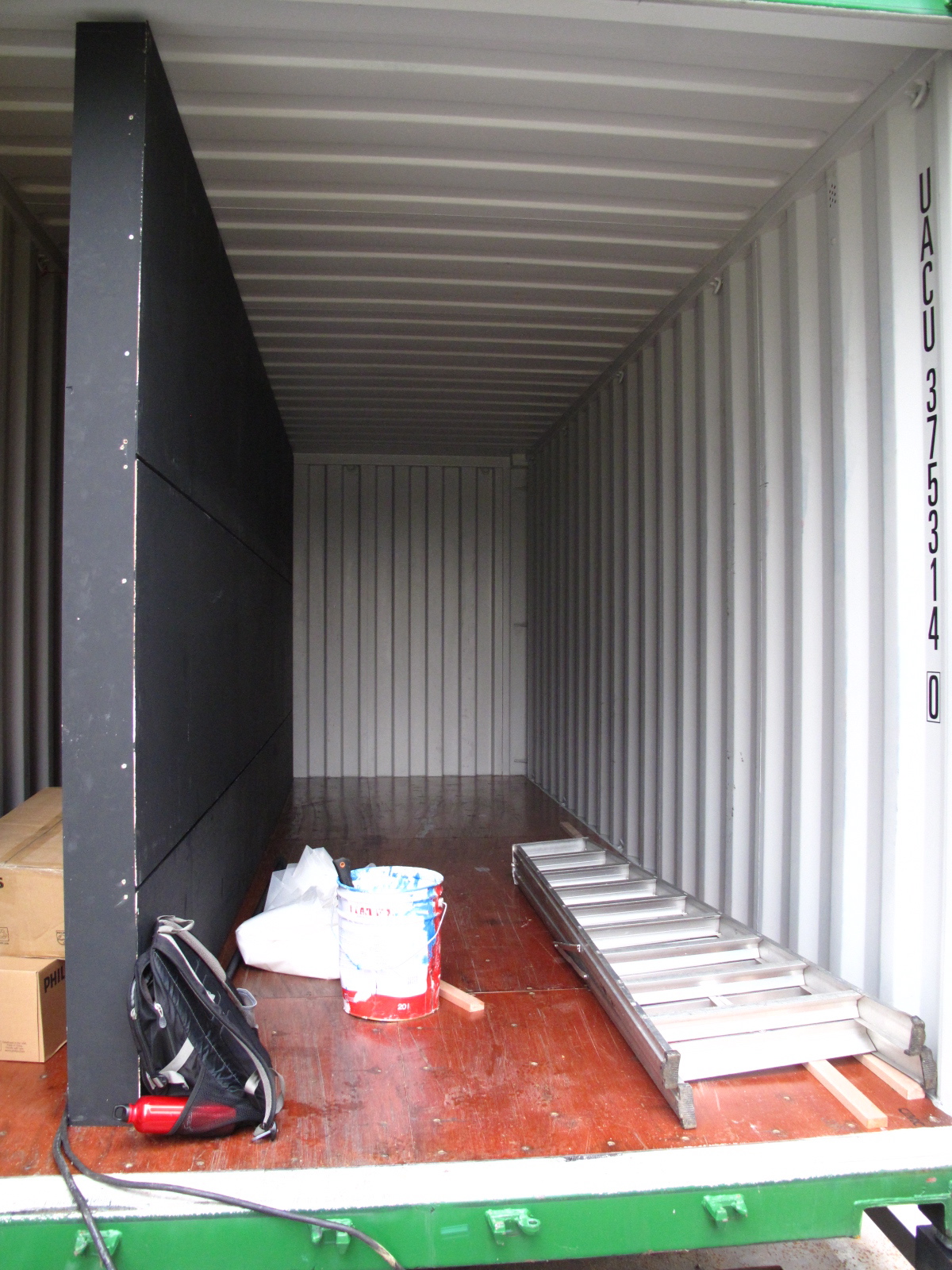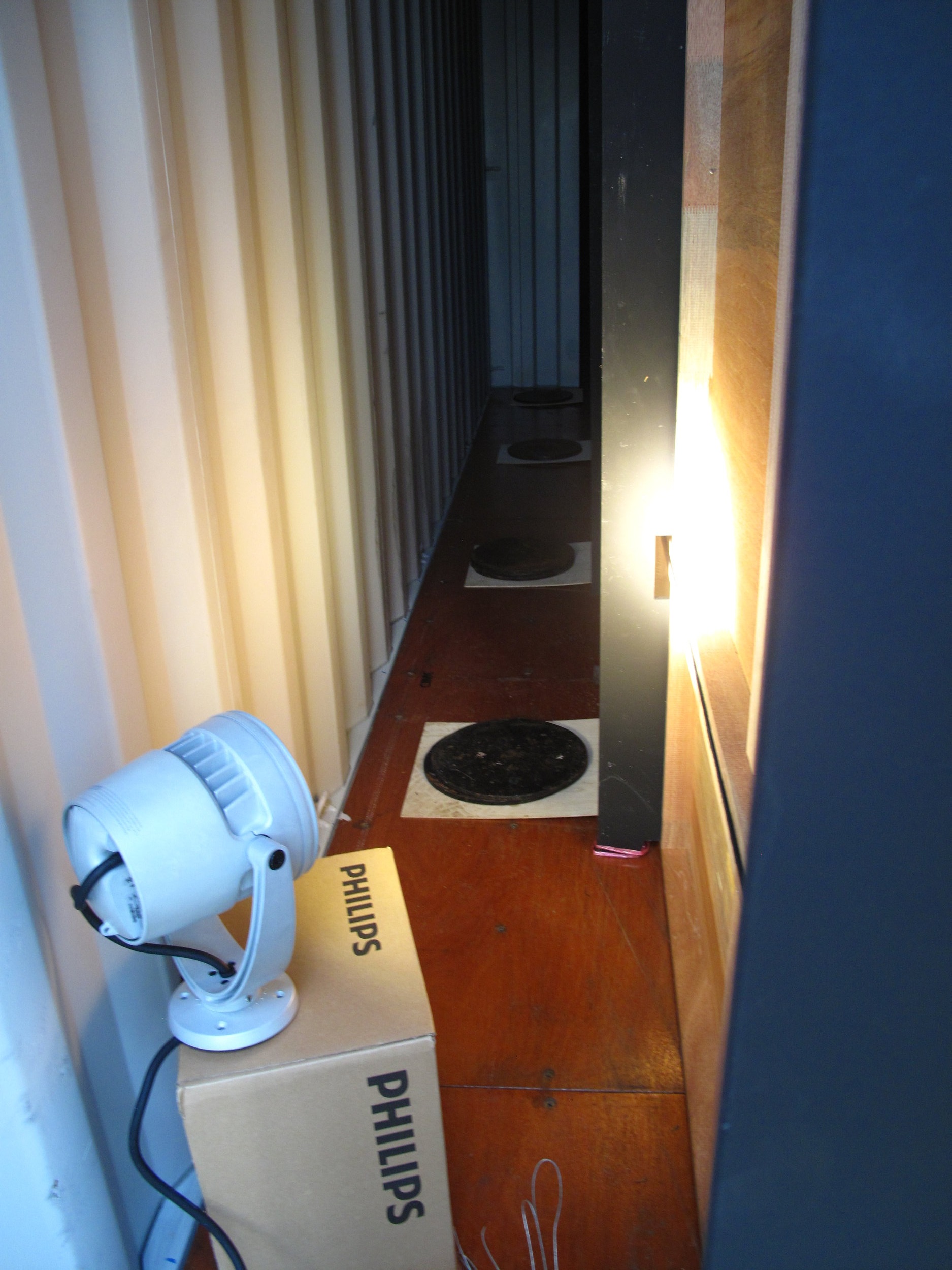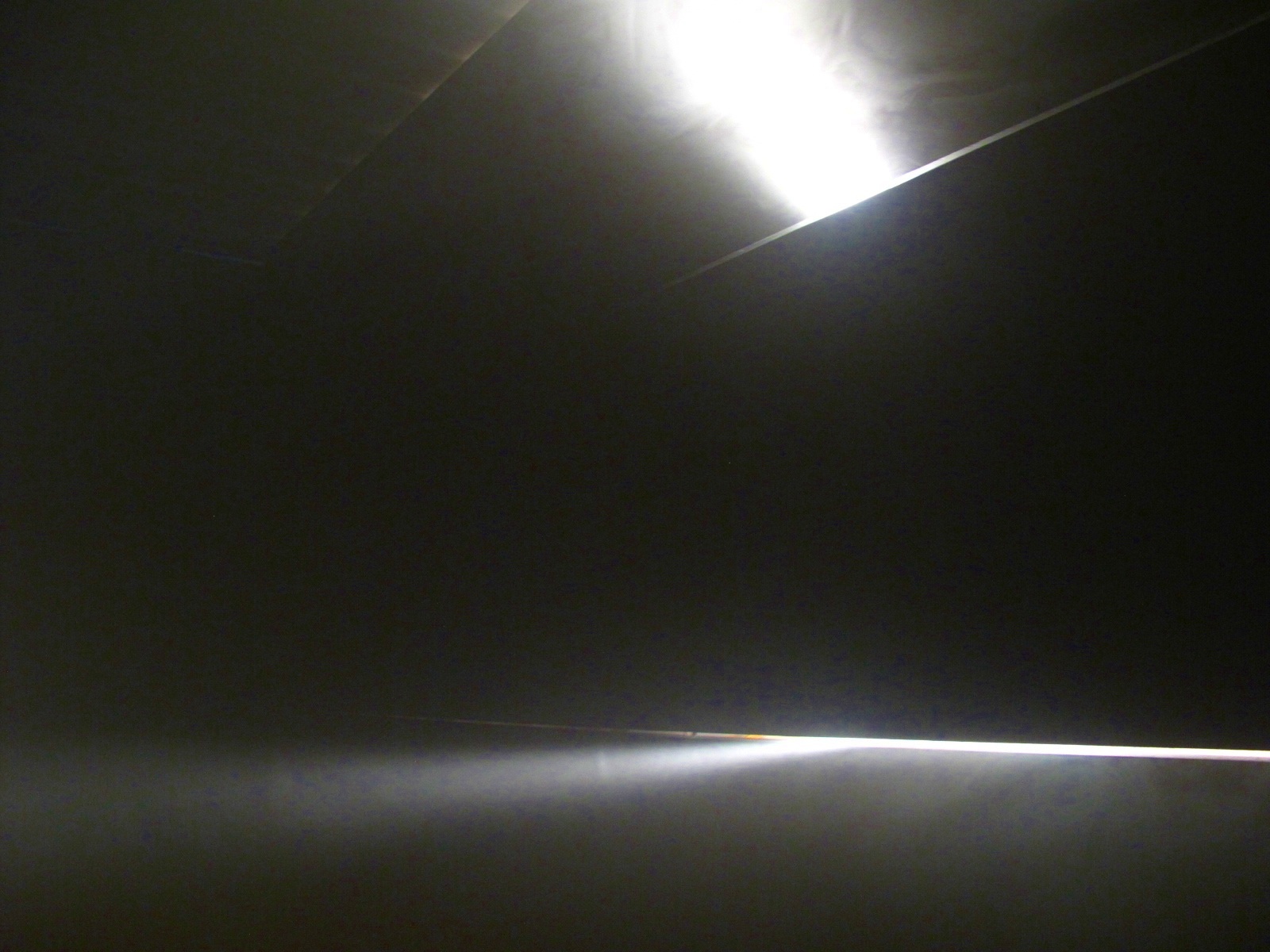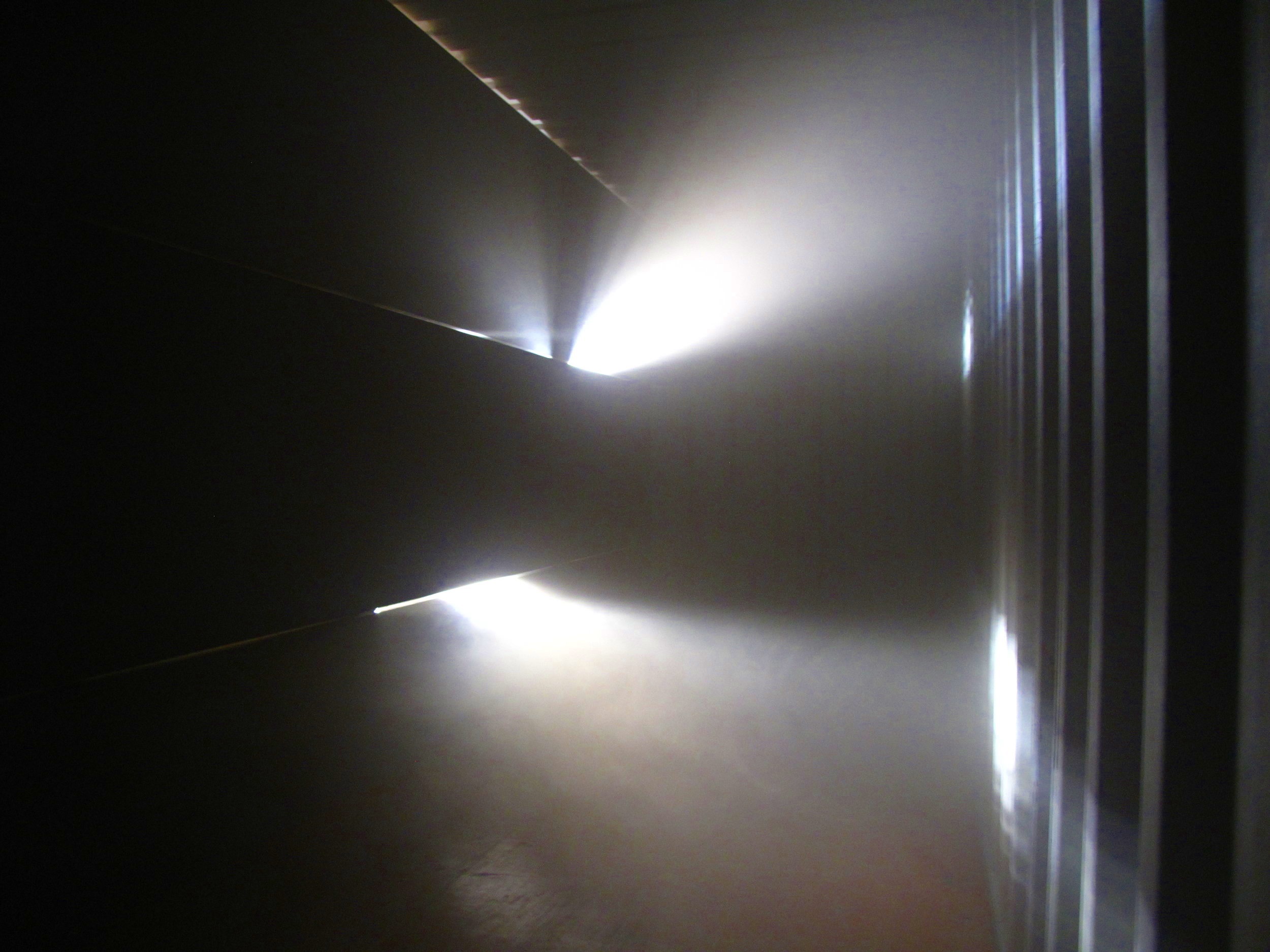Tabula Rasa
2012
590cm x 235cm x 239cm
Light
Tabula Rasa, 2012
590cm x 235cm x 239cmLight
This work seeks to use the projection of light as a metaphysical division of space. The work will only be complete with the interaction between the audience and the space. The light will be symbolic of the flexibility any space, and how it can be manipulated yet not permanently affected. At first, viewers may perceive the division of space as a more physical and literal division, possibly thinking that it is impassible and immovable. But upon further inspection, audiences will see that these “divisions” are ephemeral and traversable. The work attempts to impress upon the audience how light, rather than solid constructs, can affect space and one’s perception of it.
Walking through the beams of light will be similar to a retina/laser scanner, drawing attention to the movement between spaces. This transition will in some ways give the impression of walking through a wall or partition, symbolizing the relationship between person and installation, space or environment. The projections are also linked to the infinite possibilities of the gallery, acting like the temporary wall divisions in galleries and other physical divisions – a “blank canvas” for expression. Light, although traversable and ephemeral, is at the same time a representation of how architecture limits human interaction. Similar to any wall, it is immovable, and audiences are subject to what has been given.
The installation will use powerful lights from “projectors” (self-made ray boxes using LED lights and LED floodlights. Highest luminosity of LED –highest known now is 16 lumens) to project vertical and horizontal lines, spanning the height, length and width of the container, from different positions. The light will divide the space into the segments of various dimensions, made visible with the use of a smoke/haze machine. The haze that will be within the container will also have to be dense enough to create the effect of a solid wall when the light is projected. Throughout the exhibition, the container will be left in complete darkness with exception of the lights coming from the “projectors”.
The visual outcome of these projections will be similar to Anthony McCall’s, Room with altered window (1973) and Long Film for Four Projectors (1974). They have also taken inspiration from Shigeru Ban’s shelters – the neat Japan inspired partitions – and Olafur Eliasson’s Remagine (2002) – using lines to create the illusion of three-dimensional space. However, the projections will be in a more “orderly” and organized grid fashion. Being perfectly perpendicular to the ground from each projection.
Process Documentation
*LED flood lighting sponsored by Philips Singapore. In conjunction with iLight Marina Bay, 2021.



















